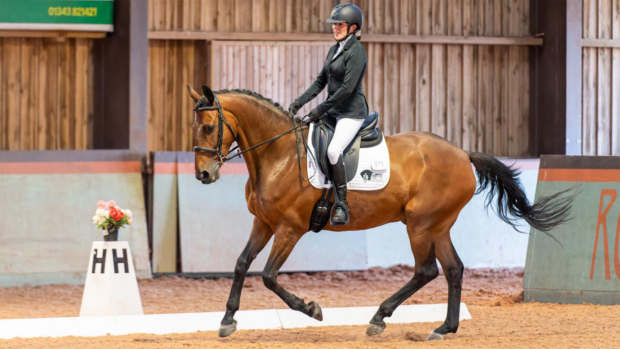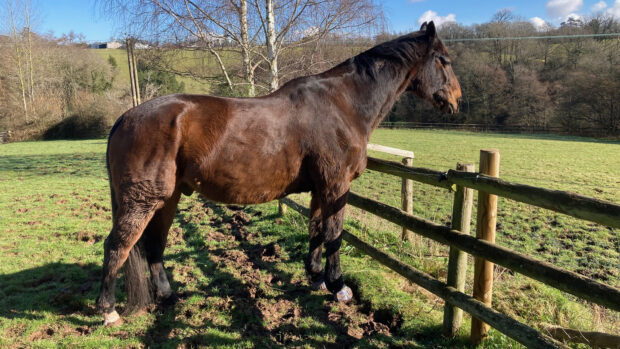Advertisement Feature
The Billy Stud, a joint venture between long-term friends Donal Barnwell and William Funnell, combines Donal’s exceptional eye for a horse with William’s talent as a rider. It was established 18 years ago, starting out with just one mare and one foal, almost by chance: Tatum, an Irish-bred mare by Clover Hill x Sky Boy, was bought as a three-year-old, but an injury meant an end to her competitive career and a first foray into breeding for Donal and William. Tatum proved to be an exceptional, prolific dam, producing many excellent foals, and would go on to become the Billy Stud’s foundation mare (and Billy Congo’s grand-dam).
The stud now produces approximately 80 foals per year. Some of the mares are purchased, in a constant attempt always to improve the stud’s quality; others are homebred – now in the second generation of Billy Stud dams. “They all tend to have the same type: the right mix of brain and blood,” says Donal. The stud mainly uses their own stallions, primarily Billy Congo, Cevin Z and some of their offspring.
“The best piece of advice I can give [to breeders],” says William, “is to use the best possible mare and the best possible stallion, despite the price. Don’t skimp in the beginning because if you make a mistake, you only really find out five years down the line – and it costs as much to produce a bad horse as it does a good one.”
While Donal looks after the breeding side, William takes care of the production side. All horses move to William’s yard as three-year-olds, where they are backed and produced by a team of half a dozen riders. After a few months under saddle, they are turned away again for a few months. “I so enjoy working with young horses: it keeps me young!” jokes William. “And to have won a team gold and to be in the top 30 in the world on a homebred (Billy Congo) is something that I am exceptionally proud of.”
Donal and William prefer not to judge their horses as foals, neither do they jump them as yearlings: their ethos is to let them be young horses, waiting until they are three. “We firmly believe that all they should be doing until they are three is eating grass in a field,” say Donal and William. “We’re for being as natural as we can: nothing is rushed, nothing is forced.”
Virbac 3D WormingThree key points to successful worming can be described in 3D: Direction, Dose and Delivery. Take the right DIRECTION
Get the DOSE right
DELIVERY – administer the correct dose
3D Worming is brought to you by Virbac, the manufacturer of Equimax and Eraquell equine wormers. To find out more visit www.3dworming.co.uk |
For the same reason, they tend not to compete too much in young horse classes. “We do do some four-year-old classes with some of them, but only with the more mature ones and not as a general rule,” says William.
A good, efficient relationship with farrier and vet is invaluable. This is especially important as the mares live outside 24/7, and the foals are born in the field and live out right from the start. Once scanned in foal, the mares move to a field closer to the stable. As they grow older, the young horses gradually move further away from the yard towards the farther fields. They are never shut inside, and by being out in a herd they learn to socialise. “Every horse is an individual and you can learn so much about their character just by looking at them interacting within the herd,” says Donal.
With such a vast breeding operation, land management is key. “As part of worm control, we use sheep in winter to eat up the grass – we have the space for it. The grass is well fertilised; we use our own manure, spreading it in the autumn. It’s good stuff and makes the grass grow.” But even more important than that is a strategic, targeted worming programme:
“Worming is absolutely key,” Donal stresses, “and the single most important aspect of a successful breeding operation. “It’s really become the key thing. It’s essential to keep good condition going into winter, and with Virbac, there’s one less thing I have to worry about” says Donal. “We want to feed the horses. There’s no point feeding the worms!
The long-standing relationship between Virbac and the Billy Stud works because they share the same ethos: the way the Billy Stud and the Funnells manage their horses is a perfect reflection of the advice Virbac give. “After almost 20 years, we start knowing what we’re doing,” jokes William. “Although we’re always striving to improve!”



